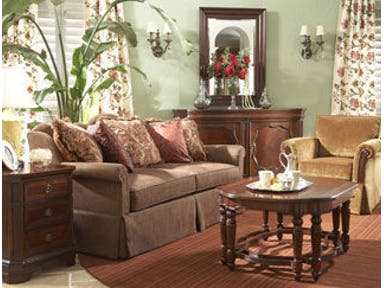
Fine Furniture Design Living Room Side Table 920-960
Interior design, when spoken of as a profession, is relatively new yet it’s constantly evolving. To be involved in this industry, one needs education, ample experience and in some states, it is even necessary to take a licensure exam. The function as well as the quality of interiors, after all, depend on interior design.
On the so-called journey of the interior design process, designers often times define what they do as well as what they work with. To some, good design means the fusion of function and beauty. Others view it as having an efficient and durable home. Still, others see interior design as an expression of one’s self onto his home or workplace.
Interior design may also be viewed as a series of choices and their consequences. Lastly, it should be holistic.
To know whether interior design is art or science, let’s take a look at the principles that comprise this term –
Principle of Unity
Interior design asks for a sense of uniformity and harmony. This should be your visual guide in understanding your living space. Minus unity, the homeowner will simply get confused.
All the design elements that were used must complement each other and the visual transition must be hard to miss. As a designer, you need to learn to overlap the elements so that they work together instead of competing with one another.
Principle of Balance
This is the orderly distribution of elements. Visual equilibrium is achieved through this principle.
There are three ways to achieve balance in interior design – through symmetrical, asymmetrical and radial ways. Symmetrical balance has a central axis where both halves are provided with equal design elements. Asymmetrical, on the other hand, keeps an odd number of design elements though there still is an imaginary central axis (a.k.a. the focal point). Radial, simply put, uses circular symmetry (e.g. chandelier hanging in the middle of a dining room).
Principle of Rhythm
This suggests the linked movements between all the design elements. This is essential so that a visual tempo is maintained. Elements must be repeated throughout the space in an orderly manner. There are three methods in achieving rhythm – repetition, progression, and alternation.
Principle of Emphasis
As the term suggests, this principle centers on having a focal point. This could be color, texture, pattern or a piece of furnishing. To use effectively, make sure that the focal point is the most dominant piece in a space.
Principle of Contrast
Contrast is the difference between color, luminance, form or space. An awesome example of this is when you use black and white in a home. This is also the principle that’s being followed when a circular mirror is paired with a rectangular sofa.
Principles of Scale and Proportion
These ensure that all the design elements placed inside a living space belong to one another. This can be determined by the objects’ shape, size, color or even dimensions. An example is when you have a high ceiling; this means that you have to look for bigger or taller furniture instead of the low rise pieces in the market.
Principle of Details
These are the capstones of an interior design. This could be the embroidered design on your colored throw pillows inside the living room. This could also be the ornate designs on the legs of your antebellum furnishings.
Details could be patterns or textures. They can be repetitive or not.
Conclusion
Now that you learned the different principles of interior design, what do you think it is? Is it science, art, or both? To the trained eye and those that have a creative instinct, it is both and so many other things.
© McCreery's Home Furnishings | All Rights Reserved | Privacy Policy